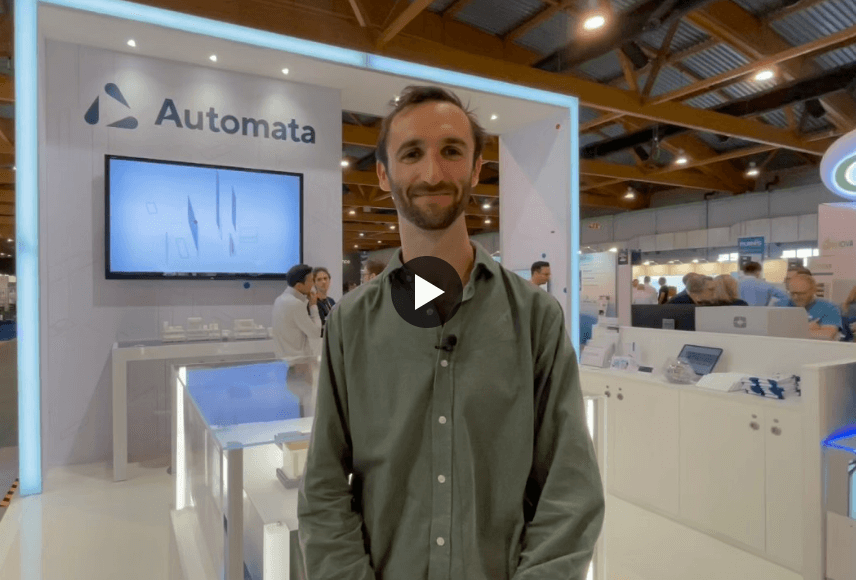
As featured on linkedin.com
Nick Pattinson talks AI in automation
Drug Target Review caught up with Automata VP of Product and Strategy Nick Pattinson at SLAS 2023. They discuss how the integration of AI is helping to reduce animal testing. View it on LinkedIn here or read the transcript below.

DTR: How do you think the advancement of AI technologies has influenced the lab automation process, and what specific benefits have been realised in terms of efficiency, accuracy and data analysis?
NP: A big change that’s happening within the industry is, with more and more FDA regulations pushing away from animal testing, you’re seeing organisations have to consider what they do instead, and that is driving the discussion around AI. That requires high-quality and highly contextualised data, which is something that labs don’t have. It’s not something collected easily by people, and in turn that’s driving automation to be adopted. From an automation system, you can collect far more, and robust data.
DTR: What do you think som of the key challenges faced integrating AI into lab automation is and how are the researchers and developers addressing these challenges?
NP: A big problem that exists in this industry still when we compare it to other industries is closed walls systems. In order to integrate AI you need to be a more open platform – no one is going to develop everything. In the same way we’ve seen this with instruments and the drivers and how open they are – we have exactly the same with data systems and making sure those are more open – we have the same with AI. The big challenge is making sure all the ecosystem players within the lab are developing in an open way that enables others to then build on top.
Q: What do you think of the potential future applications of using AI in lab automation and how might these revolutionise scientific research and experimentation?
A: I’ll focus on two. The first is just leading on from what we’re all experiencing from large language models like ChatGPT, which are giving people the ability to do very complex things – for designers to create incredible websites and games for example – through very natural language prompts. I hope the simplicity that brings is something we can leverage within the automation space to make a previously complex technology easier and easier. The second area is making decisions in-process. A good example of this is in cell culture where you want to be able to respond to the way a cell colony is developing. Being able to close the loop, so an automation system can not only collect that data but then make a decision based on what comes and what steps to take next, will be massively transformational